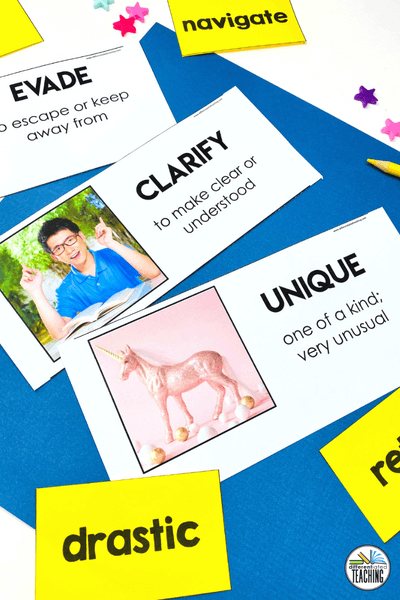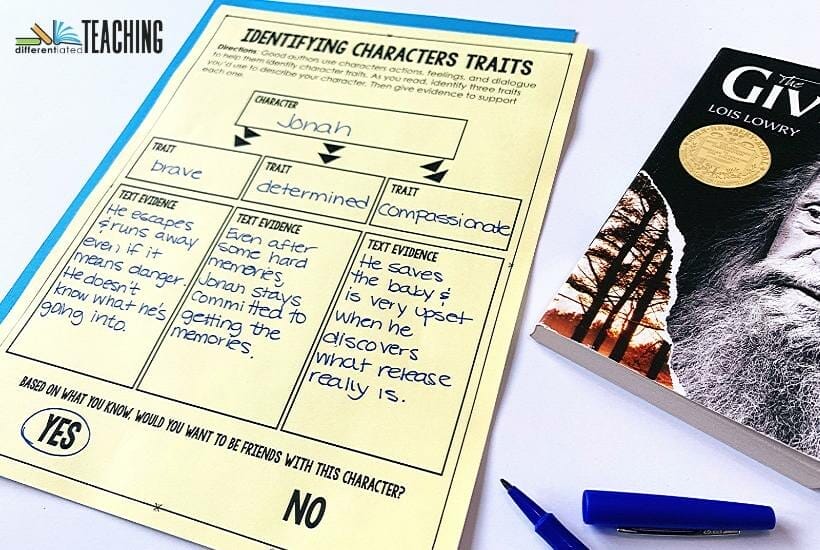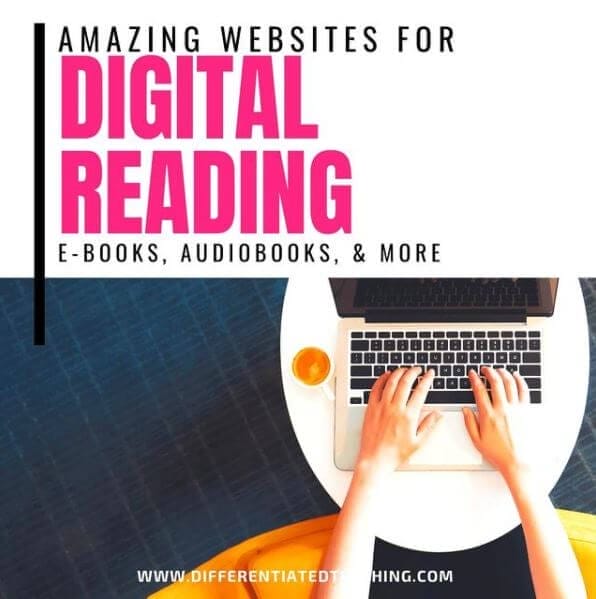The 5 Key Components of Effective Reading Instruction
These days, there’s a lot of conversation about teaching reading. In fact, some have argued that we’re seeing a resurgence of the Reading Wars that were so heated in the 1980s and 1990s. Regardless of where you stand on the issue, it’s important that all of us understand the foundational components of reading. That’s because while there is still some disagreement about the best way to teach reading, most experts agree that there are five essential pieces to effective reading instruction:
- Phonemic awareness
- Phonics
- Fluency
- Vocabulary
- Comprehension

Whether you’re new to teaching or just trying to brush up on the basics, here’s a quick overview of each of these five components and some basics of what they might look like when you are teaching them to upper elementary learners.
Teaching Reading in Upper Elementary and Beyond – the 5 Core Parts of Every Lesson
When teaching reading in upper elementary, you’ll want to ensure that your instruction contains all five of these essential components. While the balance may shift depending on what you’re working on in a particular lesson, all five should be represented every time. Let’s take a closer look at each one.
1. Phonemic Awareness
Phonemic awareness is the understanding that spoken language is made up of smaller units of sound called phonemes. These skills include identifying and producing individual sounds (phonemes), blending sounds together to make words, and segmenting words into their individual sounds.
Explicit instruction in phonemic awareness helps students understand that spoken words are made up of small units of sound and lays the foundation for later phonics instruction. This instruction is typically low-prep and easy to incorporate into your lesson plan because it is done orally and should only take a few minutes at most.
While often considered important at the primary level, phonemic awareness is also a critical component of reading instruction for older struggling readers and ESL students. Many research studies have shown that explicit phonemic awareness instruction can improve reading skills for these groups of students.
Meaningful Phonemic Awareness Activities for Older Learners:
Say a word. Have students repeat this word. Then have them repeat it again, but delete or replace a phoneme. For example, early in the year might say something like. “Say tray. Now say tray again but without the /t/.”
Later on, this task can be made more complex by having students substitute vowel sounds or work with multisyllabic words.
2. Phonics
Phonics is the relationship between the letters of written language and the sounds of spoken language. Students who receive explicit instruction in phonics learn how to decode unfamiliar words by sounding them out. A strong foundation in phonics is essential for young readers as it enables them to read independently. Phonics is also a foundational piece of the puzzle for advancing readers as they work to tackle more difficult texts filled with multi-syllable words.
Initially, phonics begins with the basics of short and long vowels. As students progress, they learn about more advanced concepts such as blends, digraphs, and diphthongs. In later grades, syllable division is a core part of phonics instruction to help students decode multi-syllable words.
Phonics Activities for Older Learners:
Have students sort words by the phonics principle you are working on, or have them practice sorting words by syllable type. This can include coding words for vowels and consonants to help identify open and closed syllables.
3. Fluency
Fluency is the ability to read text quickly, accurately, and with appropriate expression. When students are fluent readers, they can focus their attention on comprehension rather than decoding each word individually. Fluency, therefore, is developed in concert with strong decoding skills.
Fluency instruction typically begins in the primary grades with students learning basic strategies such as reading with expression and using a finger to keep track of words as they read. As students become more proficient readers, they can move beyond these basic strategies and develop more sophisticated fluency skills such as rereading difficult sections and self-monitoring for errors.

Fluency-Building Activities for Older Learners:
To help students develop fluency, provide them with opportunities to read aloud regularly. Choral reading, partner reading, and repeated reading are great ways to improve fluency.
However, when targeting fluency, it is always important to be sure accuracy is solid first. This means students shouldn’t be working on fluency before they have the pre-requisite decoding skills necessary to read the given text. A diagnostic assessment can be a great tool to gather more data if unsure.
4. Vocabulary
A student’s vocabulary knowledge has a direct impact on their reading comprehension. Students with a large vocabulary can understand and process what they read more effectively than students with a limited vocabulary.
Not surprisingly, vocabulary is often a barrier to student success in reading and academics. To close the vocabulary gap, students need direct and explicit instruction in vocabulary development. This instruction should include opportunities for students to learn about word meanings, study morphology, practice using new words in context, and play word games.

To build students’ vocabulary knowledge, provide them with opportunities to hear and see new words in various contexts. Reading aloud frequently, using picture books, and discussing new words during class are also all great ways to expose students to new vocabulary. However, most students will need more explicit instruction to master these words.
Vocabulary Boosting Activities for Upper Elementary & Beyond:
There are many great ways to incorporate vocabulary instruction into your lessons. One of the most important things your learners need is multiple exposures to the same word.
Word sorts, dictionary work, and creating word walls are all great activities that help students learn new words. However, they’ll only work when paired with targeted vocabulary instruction that moves students from recognition toward actually using these words in context.
5. Comprehension
Reading comprehension is the ability to understand and make meaning from what you read. Good comprehenders are active readers who use a variety of strategies to interact with the text they are reading. Reading comprehension can only occur when students have strong decoding skills and at least some fluency. However, listening comprehension can be developed independently of these skills.
There are a variety of comprehension strategies that students can use to understand their reading better. These include making predictions, questioning, visualizing, determining importance, and synthesizing information. To help students develop these skills, provide them with opportunities to practice using each strategy through modeled, guided, and independent reading experiences.
Supporting Students in Developing Reading Comprehension Skills:
To help students develop reading comprehension, provide your learners opportunities to practice using strategies using authentic fiction and nonfiction texts, such as timely articles or developmentally appropriate novels.
Question stems, modeling these strategies for students, and giving them ample time to practice using them will help them internalize the strategies. This, in turn, will help them automatically apply them to independent reading.
In addition, provide opportunities for students to practice these strategies independently or in small groups by completing graphic organizers or writing summaries after they finish reading a text. You can plan these activities into a book club or novel study.
Effective reading instruction makes a world of difference for all readers.
However, it is especially critical for those who struggle. Research suggests that quality reading instruction can close the achievement gap for struggling readers. But what does quality reading instruction look like?
In my opinion, it’s quite clear! Following the Science of Reading is important for all students, but it can change the academic picture for those at risk for reading difficulties. Effective reading instruction includes explicit and direct instruction in the five essential components of reading: phonemic awareness, phonics, fluency, vocabulary, and comprehension.
By incorporating all five components into your reading instruction—phonemic awareness, phonics, fluency, vocabulary development, and comprehension—you will set ALL students up for success!







